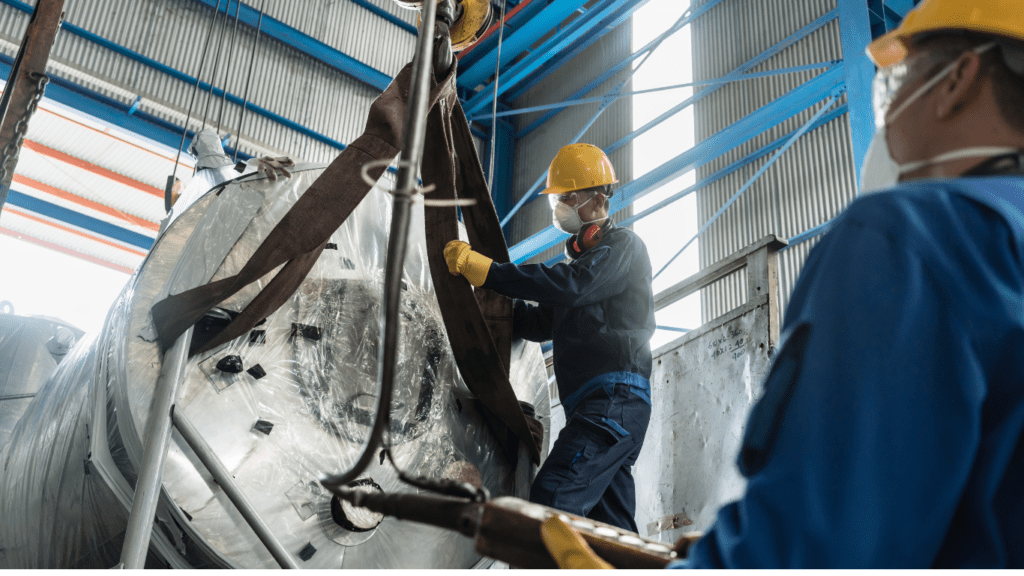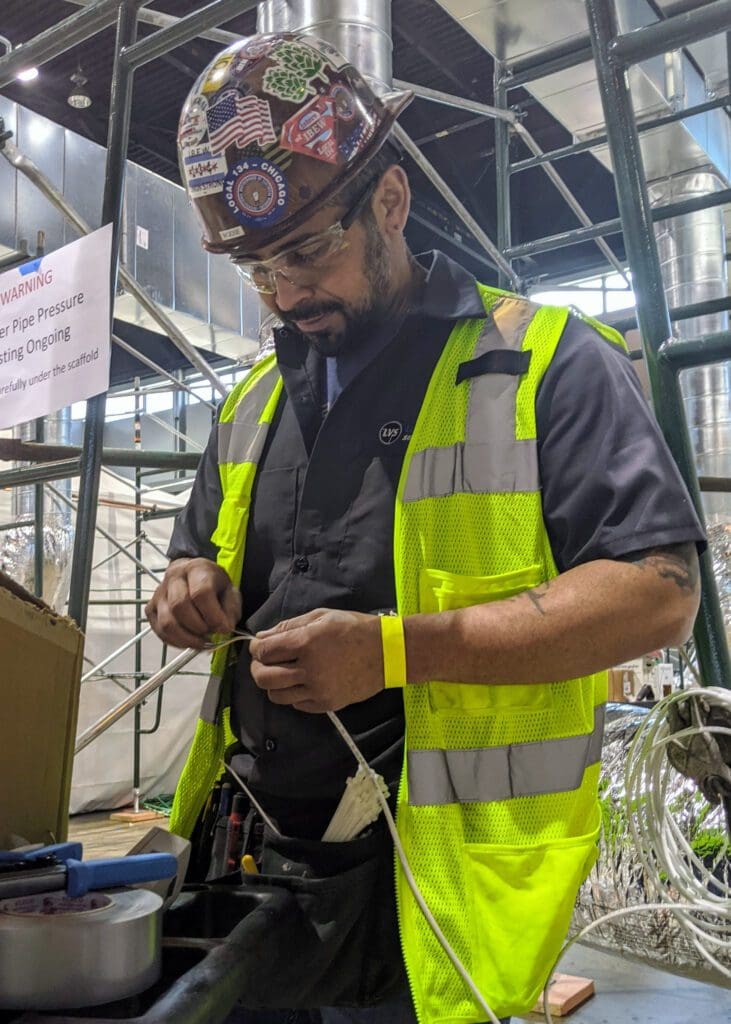How to handle pressure as a field service engineer
There are millions of field engineers all over the world working at this exact moment in time. They are in different countries, in different industries, and working under very different conditions.
One of the main things they have in common is that they are working for all or some of the time, under pressure. For some of them, every call involves pressure, and for others there may only be the occasional pressure moment. This article focuses on ways for field engineers to handle pressure.


Sources of pressure
The pressure will be coming from different sources. Some of it will be visible to an onlooker, for example, being asked by a customer:
“When will it be working again?”
“How long will the line be down?”
“Why is it taking so long?”
Some of it will be invisible, in the mind of the engineer, and not visible to an onlooker. For example, when an engineer realises that a repair or installation is more problematic than estimated and planned for. There may be parts missing or difficulties in installing the equipment where the customer wants it.
There will also be pressure exerted on the field engineer because of the environment or the weather. Working in extreme cold, extreme heat, or in cramped conditions brings pressure too. In addition there is pressure from working in a potentially dangerous or risky situation.
Some of the pressure will be personal self-talk. Perhaps the engineer has something outside of work, which is causing anxiety, or is not feeling completely well today. The engineer may be internally creating the pressure because they want to succeed and are aiming for a promotion.
This is all multiplied for those engineers who are working alone, even more for those who are working alone and in a very remote situation. These engineers are away from home and the support of family and friends, as well as their home comforts, preferred food, and social life.
Examples of pressure field engineers handle
A coiled tubing engineer in the oil and gas industry working setting up oil production in swamp conditions with minimal internet access.
Working up high as a wind turbine technician when the temperature is a long way below zero, and the forecast is even worse for the next day.
An engineer trying to establish the cause of a failure in a semiconductor fab and knowing the high cost of every hour of lost production.
Working as a biomedical engineer in a hospital environment whilst sick patients’ appointments are being cancelled because the MRI machine is not working.
A field service engineer who fixes security systems and has eight jobs allocated when only six will fit into the day.


Identify the source of the pressure
The first thing to do is to identify the source of the pressure. This is a four-step process.
Where is the pressure coming from?
For example, the client, head office, engineer’s lack of time, lack of knowledge, or lack of the correct equipment
Is the source of pressure within the control of the engineer?
For example, if more time is needed, can an allocated job be given to another engineer or that job be rescheduled.
Can you achieve a partial solution?
For example, can the equipment be fixed to work for now, but then upgraded on a future visit.
Can it be managed now, or do you need to tell the customer you cannot resolve it today?
For example, is this really a two-person job? Or is the problem you have identified beyond your current competence level, or the certified training level that you have.
How to work under and handle pressure – a practical toolkit
Experienced engineers know that dealing with pressure is not easy and needs a combination of techniques. In a pressurised situation, consider these ten to start with.
Take a break
Take a break and physically walk away from what you are doing. If possible, go outside and breathe fresh air.
Find help
Can anyone help you? Can you delegate? Is there someone on site who could, provide useful information or a cup of coffee? Is there any remote or online support available? Experienced engineers always flag that they need additional support before things become critical. Communicate with your support team that the job is harder than at first planned for. Don’t be afraid to ask for help and support.
Backup
Have the backup available from your organisation to be able to walk away and leave the problem until the next day or next shift.
Focus
Stay organised and focused. Don’t be distracted from your usual work process and don’t miss steps in the procedure.
Onsite personnel
Don’t skip talking to people who are onsite and gaining their insights and knowledge. It may take some time to do this before you start to work but may speed up completion.
Past experience
Use your past experience and think of another time when you have handled a difficult issue that was resolved. Even if the current issue is not exactly the same, remember the steps you took and remember the feeling when the work was completed.
Health and Safety
Keep your mind on health and safety. Accidents are more likely to happen when an engineer is tired or working in difficult circumstance.
The Client
Keep the client calm. Explain to the client exactly where you are in the process, what you have done, and what you are going to do. Manage expectations throughout the time you are there.
Appearance of calm
Give the appearance that you are coping well with the pressure:
Stay and look organised;
Sound and stay positive but at the same time manage expectations.
Don’t be drawn into and avoid protracted discussions about the issue unless the person has useful information or can help. Realise that any anger or frustration is not being directed at you but at the situation.
How to handle the pressure from a personal point of view
From a personal point of view, there are three key areas to consider: getting support, taking breaks, and finding a work life balance.
Getting support
Talk to other engineer especially asking people who have been doing the same role for a long time.
Share the pressure with your support network within the organisation you work for and outside that organisation. Being able to share the pressure you work under with someone who really understands is very useful, but any support is welcome.
Be honest with your employer about your capabilities. If you are not confident you can do a job on your own be honest.
Breaks
Don’t skip breaks, especially water breaks.
Don’t skip meals as you need to refuel, and it also gives you a break.
Socialise if you can when you take a break. Check your messages, chat to someone onsite who is nothing to do with your task.
Work life balance
Don’t finish too late as you probably still need to travel home or to where you are staying.
If you are working away from home on a project or always work offshore, plan how can you create a division between working and not working. Everyone needs to mark the end of the working day or shift and let go of the pressure at least for a time.


Learning from these situations to handle pressure in the future
Very experienced field service engineers are often better at handling pressure as they have learnt from past situations.
Here is a toolkit of ten techniques to consider.
Be honest with your employer about your capabilities. If you are not confident you can do a job on your own be honest about it and ask for an additional engineer to accompany you, until you have had more training.
If your employer wants, you to go out on your own and you are not ready. Tell them as far in advance as possible.
Make sure you are trained properly before being put into any situation.
Keep improving your ability to multitask and to look cool under pressure.
Track your personal progress with how you handle the different types of pressure. Keep a list of what creates the most pressure for you, and how you personally handle it.
Develop healthy responses to pressure and stress. How can you personally unwind after work. For example, exercise, listening to music, reading about something completely non work related.
Don’t respond by not exercising, eating and drinking unhealthy things, having too much caffeine, losing sleep.
Balance, exercise and time off
Balance your working day and seek the opposite:
Get some fresh air at the end of the day if you work in an enclosed space.
Find some silence if you work somewhere noisy.
If you haven’t moved much, exercise.
If your work has been very physical, do some gentle movement or stretching.
Establish boundaries so that in future it is clear when you can call for help or leave a job. If your workload is a cause of some of the pressure you are under, address this with your manager. Can something be changed going forward?
Schedule time off and make sure this is a regular thing in your annual calendar.
Build and keep building your support network both inside and outside work.
Further reading
Ten tips for talking technical to non-techies.
Al Bates and Carl Tope advise on how to handle on-site communication challenges.
Building trust as a Field Engineer and within a Field Engineering Team – a practical toolkit


Responses